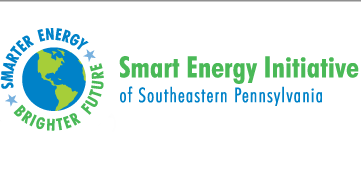PA C_PACE Program Guidelines DRAFT PUBLIC COMMENT 20181219 (002) ALLENTOWN, PA., December 19, 2018 – On December 18, 2018, Sustainable Energy Fund, Keystone Energy Efficiency Alliance, the City of Pittsburgh’s Office of Sustainability and the Philadelphia Energy Authority released draft Program Guidelines for Pennsylvania’s Commercial Property Assessed Clean Energy Program (C-PACE). The Program Guidelines are being made available for public comment through January 18, 2019.
C-PACE is a financial tool for property owners to obtain low-cost, long-term financing for energy efficiency, renewable energy and water conservation projects. C-PACE can facilitate a loan for a project by placing a voluntary payment on the property that repays the costs of the upgrades. Pennsylvania C-PACE was created through enabling legislation in July of 2018. Pennsylvania is the thirty-sixth state to adopt C-PACE legislation in the US. The bill was sponsored by Senator Blake and was passed with bipartisan support.
To develop the C-PACE program in Pennsylvania, four interested public-sector organizations have partnered: Keystone Energy Efficiency Alliance (KEEA), Philadelphia Energy Authority, City of Pittsburgh Sustainability Commission and Sustainable Energy Fund. These organizations collaborated to launch the program and develop Program Guidelines that could be used by any municipality in the state. Sustainable Energy Fund is positioned to be the Program Administrator for any municipality that enacts C-PACE with the exception of Philadelphia, which will be administrated by The Philadelphia Energy Authority. All four organizations are committed to working together to ensure that the Program Guidelines are as similar as possible throughout the Commonwealth.
To gather additional input on the Program Guidelines, various stakeholders were invited to a series of meetings to discuss the details of C-PACE in Pennsylvania. Meetings were held in Pittsburgh, Harrisburg and Philadelphia in October. The involved stakeholders ranged from members of local government to national capital providers. The meetings were well attended with a total of over 135 people. Meeting notes were taken and are available on the website at www.PennsylvaniaCPACE.org.
The aforementioned partners worked with a consulting group to develop the Program Guidelines, taking careful consideration of the stakeholder comments. The consulting group, Abacus Property Solutions, LLC includes the directors of the Wisconsin, Virginia and Maryland PACE programs as Pace Financial Services and PACE Nation. The Guidelines include property eligibility, project requirements, contractor
Comments will be accepted on the Program Guidelines until January 18, 2019. Comments will be addressed and Program Guidelines will be finalized at the end of January. The Guidelines can be accessed on the website at www.PennsylvaniaCPACE.org or by emailing cpace@thesef.org or calling 610-264-4440. If you have any questions about the Pennsylvania C-PACE program, please contact Sustainable Energy Fund. Currently SEF and KEEA are conducting outreach to counties about C-PACE and Philadelphia Energy Authority is moving the program forward in Philadelphia. SEF expects to have some counties pass C-PACE resolutions in the first quarter of 2019.
About Sustainable Energy Fund
Sustainable Energy Fund (SEF), a nonprofit organization, assists energy users in overcoming financial, educational and regulatory barriers to a sustainable energy future. SEF provides a variety of services including financing energy conservation, energy efficiency and renewable energy projects; educating the leaders of today and tomorrow to create a passion for sustainable energy; and representing the interests of energy conservation, energy efficiency and renewable energy in proceedings before the Pennsylvania Public Utility Commission. Visit www.thesef.org.
About Philadelphia Energy Authority
Philadelphia Energy Authority (PEA) is an independent municipal authority focused on issues of energy affordability and sustainability for Philadelphia. In early 2016, in partnership with City Council President Darrell L. Clarke, PEA launched the Philadelphia Energy Campaign, a $1 billion, 10-year investment in energy efficiency and clean energy projects in four sectors: city buildings, public schools, low- and moderate-income housing, and small businesses. PEA believes that energy is an important tool for economic development, reducing poverty, improving educational environments, strengthening communities, and preserving affordable housing. www.philaenergy.org
Emily Schapira, Executive Director, 215-686-4483.
About Keystone Energy Efficiency Alliance
The Keystone Energy Efficiency Alliance is a trade association of businesses, nonprofits, and institutions working to advance energy efficiency and energy conservation in Pennsylvania. Learn more at www.keealliance.org
Julian Boggs, Policy Director, 215-910-4790



